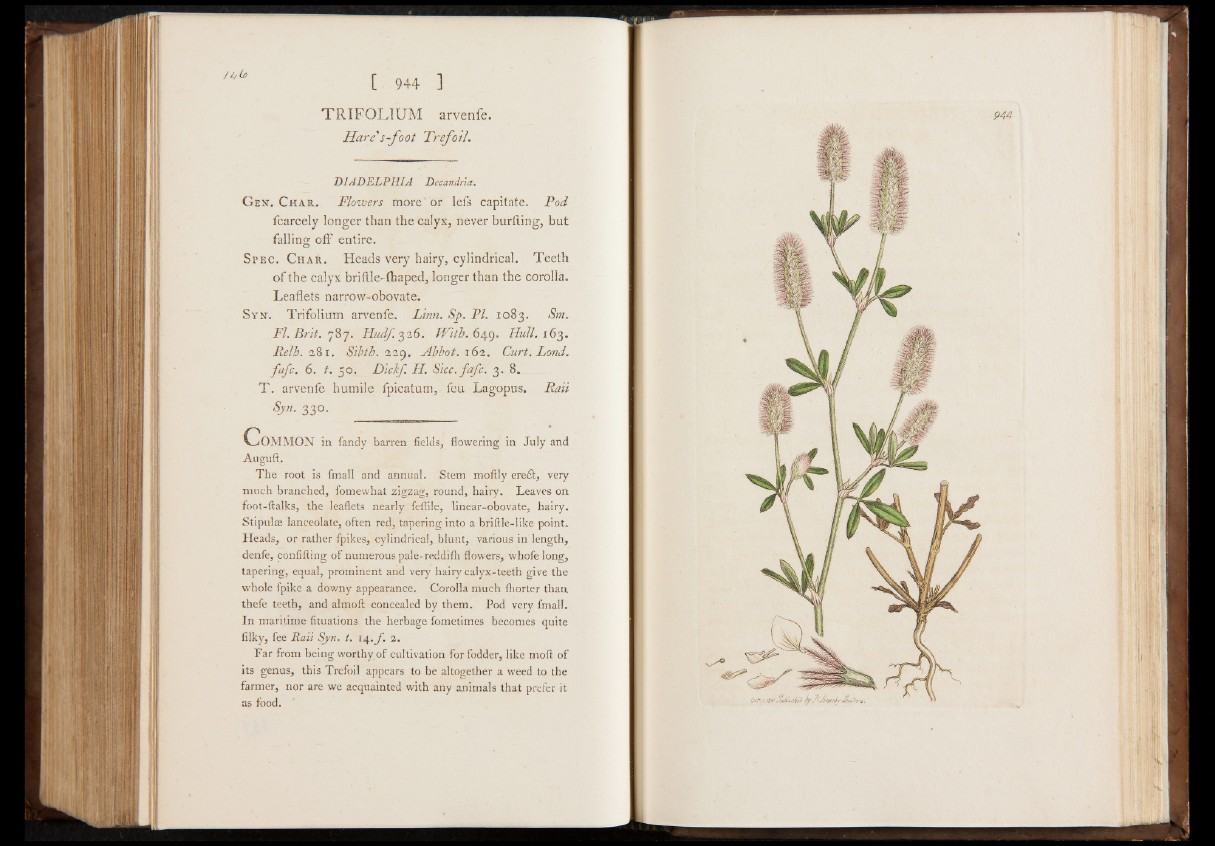
/4<" [ 944 ]
T R I F O L IU M arvenfe.
Hare s-foot Trefoil.
D1ADELPHIA Decandria.
G en. Char. Flowers more'or lefs capitate. Pod
fcarcely longer than the calyx, never hurtling, but
falling off entire.
S p e c . C h a r . Heads very hairy, cylindrical. Teeth
of the calyx briftle-thaped, longer than the corolla.
Leaflets narrow-obovate.
S y n . Trifolium arvenfe. Linn. Sp. PI. 1083. Sm.
FI. Brit. 787. Hudf. 326. With. 649. Hull. 163.
Relh. 281. Sibth. 229. Abbot. 162. Curt.Lond.
fafc. 6. t. 50. Dickf. H. Sicc.fafc. 3. 8.
T . arvenfe humile fpicatum, feu Lagopus. Rail
Syn. 330.
C o m m o n in fandy barren fields, flowering in July and
Auguft.
The root is fmall and annual. Stem moftly eredl, very
much branched, fomewhat zigzag, round, hairy. Leaves on
foot-ftalks, the leaflets nearly feflile, linear-obovate, hairy.
Stipulse lanceolate, often red, tapering into a briftle-like point.
Heads, or rather fpikes, cylindrical, blunt, various in length,
denfe, confifting of numerous pale-reddifh flowers, whofelong,
tapering, equal, prominent and very hairy calyx-teeth give the
whole fpike a downy appearance. Corolla much fhorter than
thefe teeth, and almoft concealed by them. Pod very fmall.
In maritime fituations the herbage fometimes becomes quite
filky, fee Rail Syn. t. 14.ƒ. 2.
Far from being worthy of cultivation for fodder, like mod of
its genus, this Trefoil appears to be altogether a weed to the
farmer, nor are we acquainted with any animals that prefer it
as food.